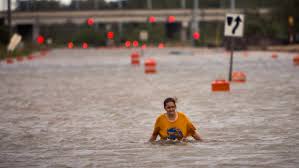
Hurricanes and other tropical cyclones are one of the leading natural threats to coastal communities. In the last five years, the United States has experience some of its highest hurricane surges on record with the surges generated along the Gulf of Mexico by Hurricanes Ike, Rita, and Katrina (e.g., Travis 2005, Irish et al. 2008a, Federal Emergency Management Agency 2008). Possible acceleration of sea level rise (SLR) and intensification of hurricanes as a consequence of long-term global warming trends can lead to increased hurricane flooding, wave action, and damages, which in turn can lead to future population shifts. However, the relationships between rising sea level and population dynamics remain somehow unaddressed. Therefore, this project aims at quantifying the potential impact of sea level rise and resulting flooding on population displacement in coastal areas.
How we work:
- Taking Bay County in the U.S. state of Florida, we estimated how many residents may have to relocate due to inundation, based on three projections of sea levels in 2080.
- We then identified important criteria affecting residential land suitability by reviewing literature and interviewing experts.
- Next, we investigated the dynamics of residential areas from 1995 to 2010 by employing Cellular Automata Model.
- Next, based on the model results and previously identified criteria, we developed two scenarios for population relocation: land redevelopment and expansion scenarios.
- Finally, we generated population relocation maps using ArcGIS software.
Our results suggest that the majority of coastal residents prefer residing near shorelines over towards hinterlands, even if rising sea level would permanently inundate their primary residences in 2080. Therefore, we recommend that stakeholders consider land redevelopment patterns when engaging in relocating affected population. Here are some results:


